Introduction
By FinancialDocsProvider.com Editorial Team • Published: August 2025
Last updated: August 2025
Knowing how to redact financial documents is essential when sharing bank statements, pay stubs/payslips, and tax returns with landlords, lenders, and auditors. The goal is simple: protect sensitive data while preserving the document’s truth. When done right, redaction shields your privacy without slowing approvals. When done wrong, it can cause rejections—or worse, raise concerns about tampering. This guide explains what’s allowed, what’s not, and how to handle redaction legally in the US, UK, and Canada.
At FinancialDocsProvider.com, our editors help organize, format, and package your files for clarity and privacy. We never fabricate numbers or change facts. We focus on compliance‑first editorial work—like bank statement formatting, clean exports, OCR, and privacy‑safe redactions—so reviewers see what matters, fast.
Related Entities & Terms
- W‑2, 1099, Schedule C, IRS tax transcript
- UK payslips, SA302, HMRC tax calculation
- Canada T4, T1 General, NOA (Notice of Assessment)
- CFPB, FTC, IRS (United States)
- FCA, GOV.UK (United Kingdom)
- FCAC, CRA (Canada)
- Personally Identifiable Information (PII)
- Account masking, data minimization, audit trail
- GLBA/Privacy rules, UK GDPR, PIPEDA principles
Quick tip: If your statement actually contains an error (e.g., a duplicate charge), redacting won’t fix it—only the bank can. Use a formal dispute process and supply supporting pages. See our step‑by‑step guide on how to dispute a bank statement error with a free letter template.
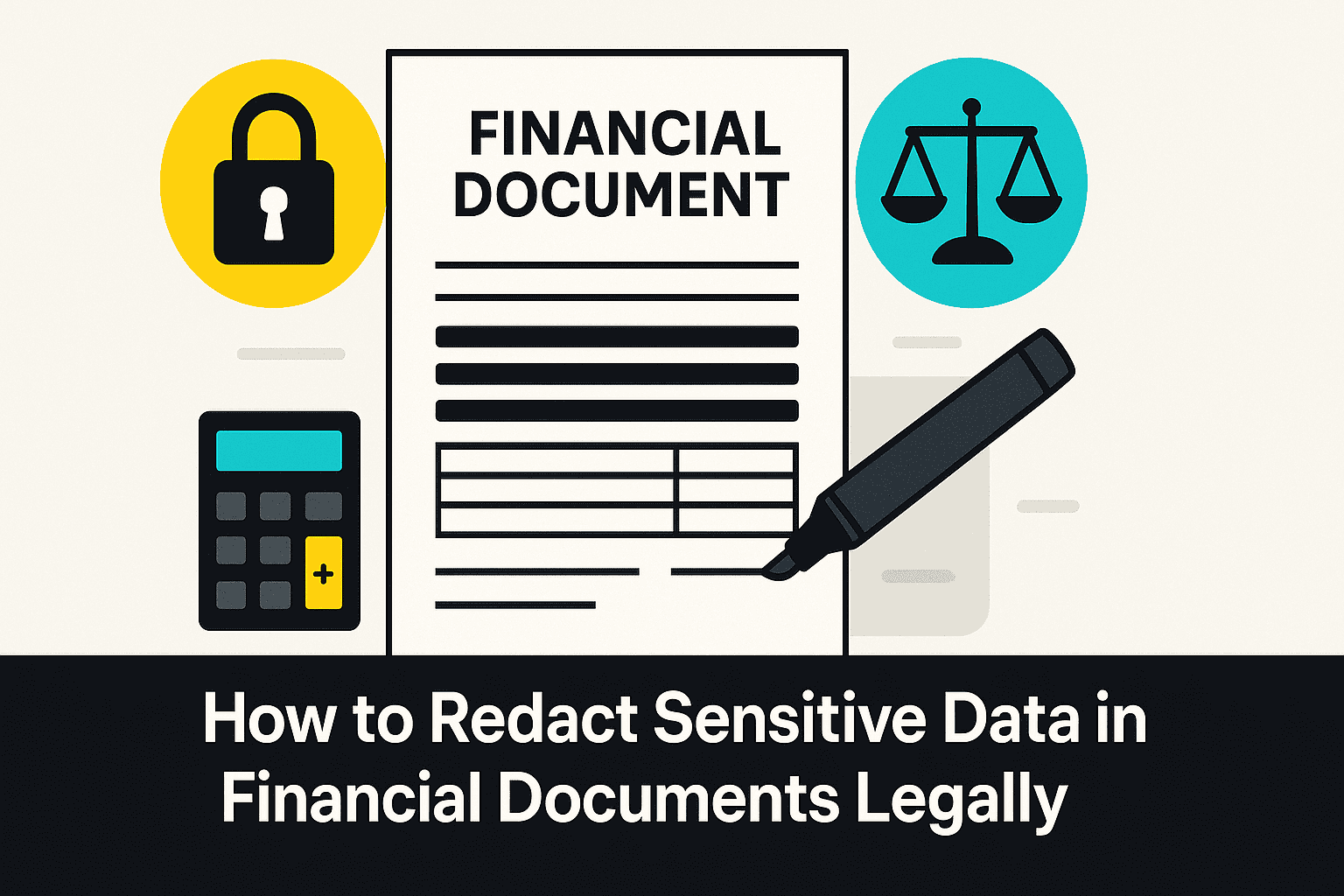
Legality basics: formatting vs. falsification (US/UK/CA)
Redaction is the practice of removing or masking sensitive personal data while leaving the underlying facts (amounts, dates, payees, balances) unchanged. That’s fundamentally different from editing numbers or changing dates, which can constitute falsification or fraud.
United States: privacy & fairness
In the US, privacy and consumer protection authorities expect organizations to secure personal information and limit access to what’s necessary. The Federal Trade Commission provides practical guidance on protecting personal information for businesses and individuals. See the FTC’s plain‑language materials on protecting personal information and data security for context and best practices.
United Kingdom: data minimization under UK law
In the UK, data protection law emphasizes data minimization and proportionality—only share the personal data that’s necessary for the stated purpose. GOV.UK’s overview of UK data protection legislation explains how organizations must handle personal data, including privacy‑by‑design practices that support careful redaction when appropriate.
Canada: consumer protection and clear disclosure
In Canada, the Financial Consumer Agency of Canada (FCAC) works to protect consumers and require clear, not‑misleading information from banks. For a high‑level view of rights and protections, see FCAC’s guidance on your banking rights and new protections.
What recipients allow (and how to confirm)
Policies vary. Landlords and lenders often accept statements with account numbers masked (e.g., last 4 digits shown), but some require unredacted copies or direct verification from the bank. Immigration or court filings may have stricter formatting requirements. Always ask the recipient:
- Which fields may be redacted (e.g., account number, address, phone, email)?
- Which fields must stay visible (e.g., transaction details, dates, balances)?
- Preferred file type and page size (PDF, 8.5×11" or A4) and whether OCR is required.
- Whether they accept supplementary documents (e.g., a letter explaining why redaction was used).
Get the policy in writing—an email or guideline PDF. Save it with your submission to show you followed instructions.
Allowed edits
- Masking account numbers except last 4.
- Removing SSN/SIN and full DOB.
- Hiding personal contact details (phone, email, home address) if not required.
- Redacting barcodes/QR codes that expose IDs.
- Re‑exporting to searchable PDF and fixing rotation.
Illegal alterations
- Changing balances, deposit amounts, or pay dates.
- Editing payer/payee names to mislead.
- Adding or deleting transactions to “fit” a standard.
- Altering employer names or tax entries.
- Any manipulation that misstates facts.
For a deeper dive on the ethics and legality of editing financial records, see our explainer: Is it legal to edit a bank statement?
Allowed edits: how to redact financial documents legally
Below are common redactions that protect privacy while preserving truth. The key is to remove sensitive, nonessential identifiers—never core financial facts.
Account & card numbers
Mask all but the last four digits of account or card numbers. Keep the bank/issuer name and the final digits visible so reviewers can match the document to your application.
Government identifiers
Remove full Social Security numbers (US), National Insurance numbers (UK), and Social Insurance numbers (Canada). If a form shows these, redact fully or show only the last 4 when allowed.
Contact details
You may hide personal phone numbers, emails, and home addresses if they aren’t required for verification. If a landlord or lender requires an address, leave it intact or submit a utility bill that shows the address instead.
Birthdates & signatures
Full dates of birth and signatures are sensitive. If not explicitly required, redact them. When signatures are required (e.g., consent forms), keep them visible and protect the page from reuse by adding clear labels like “For Application #12345.”
Barcodes, QR codes, and reference numbers
Machine‑readable elements may encode IDs or account data. Redact them unless the recipient needs them for lookups.
Formatting & export fixes (best practice)
- Rotate sideways pages and fix page size mismatches.
- Combine multi‑month statements in order, with bookmarks.
- Run OCR so text is searchable; flag illegible scans with a brief cover note.
- Export to a flat, non‑editable PDF to reduce accidental edits.
Step‑by‑step: permanent redaction workflow
- Check requirements — Ask the recipient what may be redacted and in what format. Save their reply.
- Work on copies — Keep originals untouched. Create a working copy for redaction.
- Use a true redaction tool — Avoid simple drawing tools. Proper redaction removes text and metadata, not just hides it.
- Search for hidden data — Use “Find” to catch repeated account numbers or emails on every page.
- Sanitize & flatten — Apply redactions, then remove metadata and embedded objects. Export to PDF/A or a flattened PDF.
- Test your file — Try to copy/paste redacted text. If it pastes, the redaction wasn’t permanent—fix it before sending.
- Package clearly — Use consistent filenames (e.g.,
2025‑05_BankStatement_ending1234.pdf) and a short cover note listing exactly what was redacted and why.
If you’d like help with privacy‑safe edits or clean exports, explore our proof of income editing and bank statement formatting options.
What’s illegal: changes that equal falsification
Altering factual information is never acceptable. The following actions can lead to application denial, reputational damage, and potential legal exposure:
- Changing numbers — editing balances, deposits, income, or totals.
- Altering dates or pay periods — shifting timelines to meet underwriting rules.
- Editing parties — substituting employer, payer, or payee names.
- Adding/removing transactions — fabricating activity to fake stability or income.
- Re‑creating official logos or watermarks to mislead.
Reviewers are trained to detect tampering: inconsistent fonts, decimal alignment, mis‑matched line spacing, re‑used artifacts across pages, and metadata that shows unusual edit histories. Many institutions compare totals across statements, run automated checksums on PDFs, and request direct verifications when things look “off.” Don’t risk it. We will never fabricate or misstate facts—and we will decline any request that crosses the line.
Want a practical overview of allowed vs. forbidden changes? Read our guide on what counts as acceptable proof of income and how to choose the right documents.
Real‑world use cases
Renters: landlord applications
Most landlords want recent pay stubs/payslips and two to three months of bank statements. Many accept redacted account numbers (showing only the last four), while keeping employer names, pay dates, and deposit amounts visible. If your statements show your phone, email, or home address, ask the landlord whether those may be redacted. Include a brief note like: “Account number masked for security; all amounts and dates preserved.”
Looking to strengthen your file? See our tips on making your rental application stand out.
Auto loans: verifying stable income
Auto lenders often review two to three pay cycles plus bank activity confirming deposits. Mask account numbers; keep deposit details intact. If your employer uses multiple payroll vendors, include a one‑page explanation to help the reviewer connect the dots.
SBA & small‑business financing
Expect requests for business bank statements, tax returns, and possibly a P&L. It’s acceptable to redact personal contact details or account numbers, but do not remove business names, transaction memos, or tax amounts. If a banker requires unredacted records, consider submitting via their secure portal rather than email.
W‑2 vs. self‑employed packets (US/UK/CA)
- US W‑2 employees: Recent pay stubs, W‑2(s), and bank statements showing payroll deposits. Redact SSN and account numbers, keep employer and net/gross amounts visible.
- US self‑employed: 1099s, Schedule C, bank statements, and (optionally) an invoice summary. It’s fine to mask account numbers; leave client names and payment descriptions visible unless confidentiality agreements say otherwise.
- UK employees: Payslips and bank statements; optionally HMRC SA302 for tax calculation. Mask National Insurance number where allowed; keep employer and pay dates clear.
- UK self‑employed: SA302 + Tax Year Overview and business statements. Redact account numbers and personal contact details; leave transaction narratives intact.
- Canada employees: Recent pay statements and T4. Redact SIN; show employer, pay dates, and amounts.
- Canada self‑employed: T1 General, NOA, and business statements. Mask account numbers; keep payers, dates, and totals visible.
Mini‑scenarios
Scenario A — Roommate screening: You’re comfortable sharing income but not your phone and email. Ask the landlord if contact details can be redacted. Submit pay stubs and statements with masked account numbers, plus a cover note.
Scenario B — Freelance applicant: Multiple deposits from platforms and clients. Provide three months of business statements, an invoice summary, and a brief memo mapping clients to deposits. Redact account numbers, leave deposit memos visible.
Scenario C — High‑risk identity theft concern: You recently experienced a breach. Provide redacted statements that hide address and phone, leave balances and dates visible, and request a secure upload link.
How we work
Our role is editorial and organizational—we help you present accurate documents clearly, privately, and professionally. We do not fabricate numbers, change dates, or alter parties. Here’s our process:
1) Intake
You send your files and the recipient’s instructions. We confirm the scope (redaction, formatting, OCR, bundling) and flag anything the recipient forbids. If needed, we’ll draft a short cover note explaining what was redacted and why. Learn more about our process.
2) Reconciliation
We check your packet for internal consistency—pay dates matching deposits, totals that foot across months, and steady formatting. If we spot a statement error, we’ll suggest submitting a dispute using this legal dispute letter (only the bank can correct bank errors).
3) Formatting & redaction
We apply permanent redactions, fix rotation, run OCR, and export to a clean PDF. We may add bookmarks or a table of contents for multi‑document bundles.
4) Delivery
We provide a neatly packaged PDF set with clear file names and a summary note. If a lender needs a different format, we’ll re‑export without touching the facts.
Ready to proceed? Explore our proof of income editing, check pricing, or contact our team with any questions.
Compliance checklist
- Confirm rules in writing — Know what you may redact.
- Keep originals — Work on copies only.
- Use permanent redaction — Not just black rectangles.
- Mask nonessential PII — Account numbers (last 4 only), SSN/SIN, contact details.
- Preserve facts — Amounts, dates, parties, and balances must stay visible.
- Run OCR — Make text searchable; many portals require it.
- Document your edits — Cover note listing what you removed.
- Bundle cleanly — Bookmarks, page order, consistent filenames.
- Test your PDF — Copy/paste to confirm redactions are permanent.
- Use secure delivery — Avoid email if recipients provide a portal.
Reviewer red flags (and how to avoid them)
- Over‑redaction — Hiding transaction narratives, payees, or totals. Leave what’s needed to verify.
- Inconsistent formatting — Mixed fonts or misaligned columns across pages. Keep exports consistent.
- Metadata giveaways — Files show multiple untracked edits. Flatten and sanitize PDFs.
- Disappearing artifacts — Logos or lines vanish at 200% zoom—often a sign of object deletion. Use stable exports, not “re‑creation.”
- Mismatched totals — Pay deposits don’t match payslips; month‑to‑month balances don’t roll. Reconcile before you submit.
- Unnecessary layers — Comments or annotations left in the PDF. Remove them before sending.
Helpful resources & internal links
Official guidance (US/UK/CA)
- United States — FTC: Protecting Personal Information
- United Kingdom — GOV.UK: Data protection legislation overview
- Canada — FCAC: Banking rights & protections
Related reading on FinancialDocsProvider.com
- Is it legal to edit a bank statement?
- How to fix a bank statement error (with a dispute template)
- How to make your rental application stand out
Work with us
- Learn more about financial document services (proof of income editing, bank statement formatting).
- Check pricing and turnaround times.
- Contact our team with your deadline and recipient requirements.
- Read about our process and confidentiality standards.
FAQs
1) Is redacting bank statements legal?
Yes—masking nonessential personal data (like account numbers or SSN/SIN) is a legitimate privacy practice when the recipient permits it. You must leave core facts (amounts, dates, payees, balances) intact. If a recipient forbids redaction, ask for a secure upload link for unredacted files.
2) What’s the safest way to redact?
Use a true redaction tool that permanently removes text and metadata. Don’t rely on drawing black boxes or image overlays. After redacting, try copying text from the blacked‑out area—if characters paste into a text editor, the redaction failed.
3) Which fields can I usually hide?
Commonly acceptable redactions include full account and card numbers (show only last 4 digits), SSN/SIN, email, phone, and home address. Keep dates, transaction details, and balances visible unless the recipient advises otherwise.
4) Can I submit handwritten notes explaining deposits?
It’s better to provide a brief typed cover note and, if available, supporting documents (e.g., invoices). Handwritten notes can look informal and may be ignored by automated systems.
5) Do you change numbers or fix “minor” discrepancies?
No. We never alter amounts, dates, or parties. If something is wrong on your statement, only your bank can correct it. We can help you present the material clearly and provide a clean, privacy‑safe packet.
Need accurate, reliable financial documents fast? Contact FinancialDocsProvider.com now.

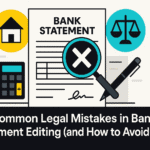
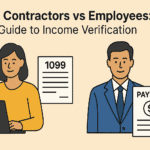
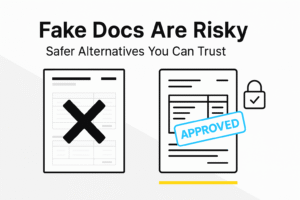

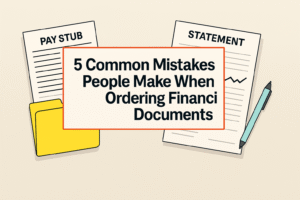
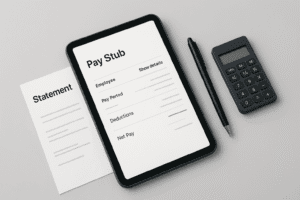
Add comment